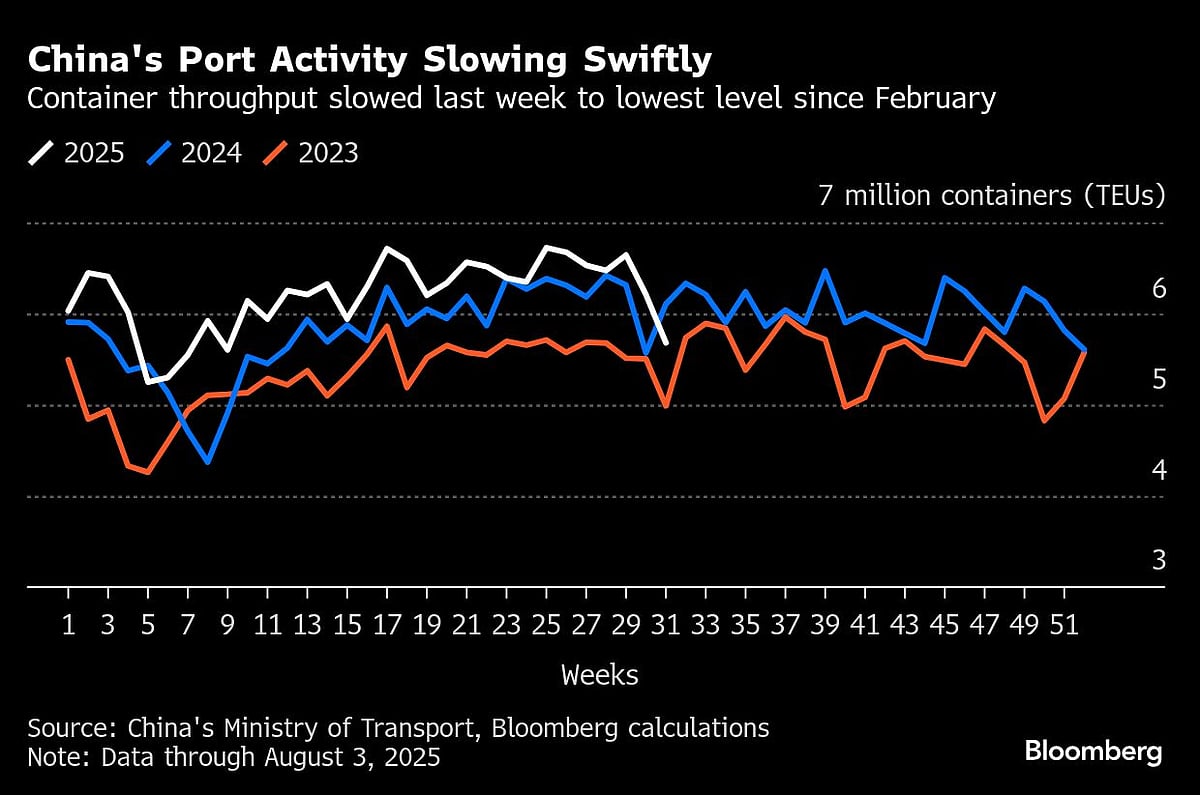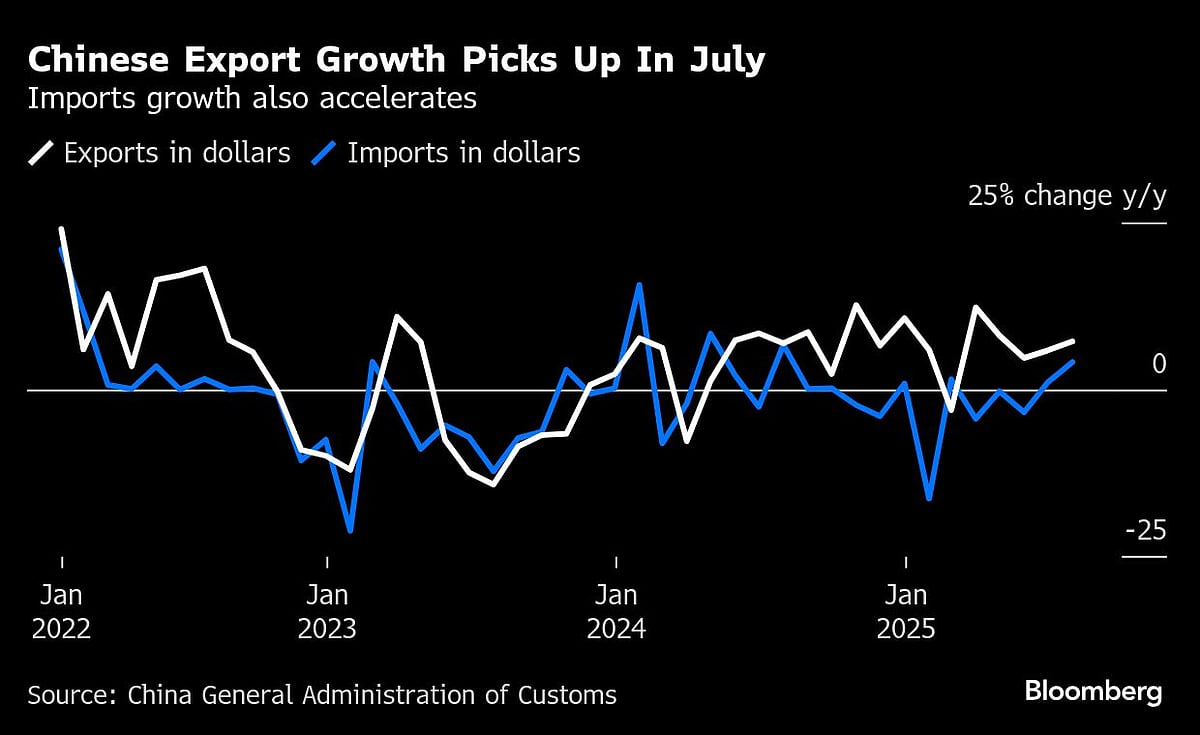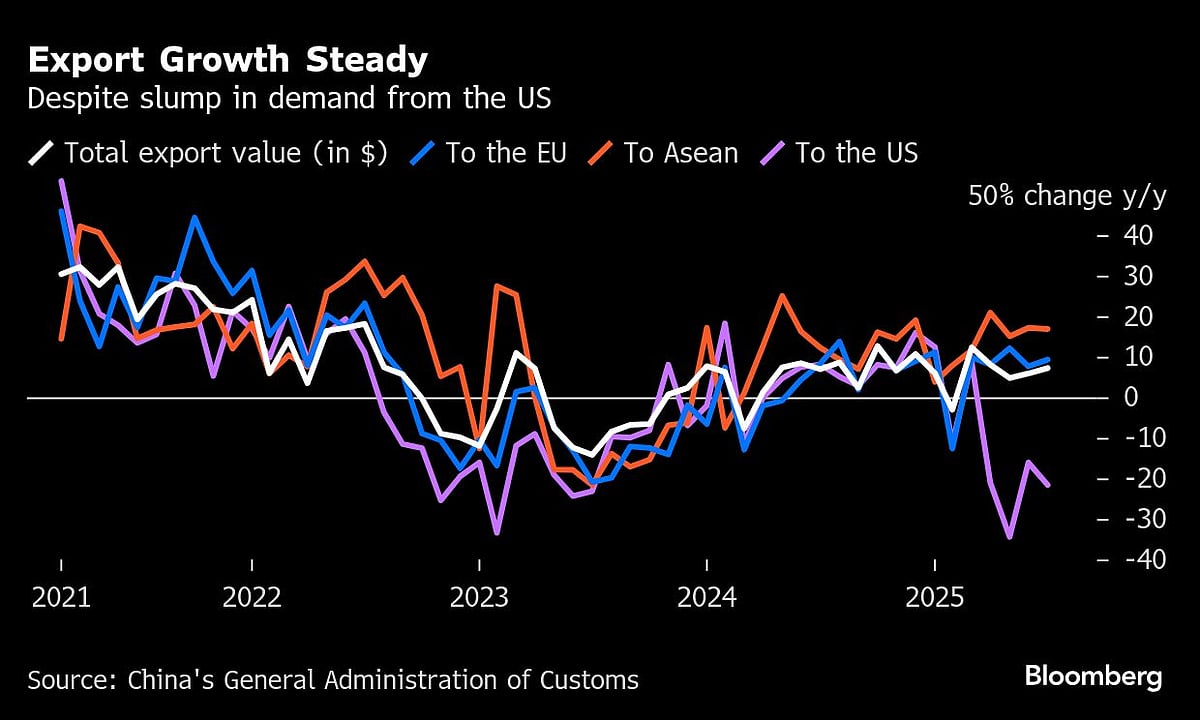China’s Export Machine Powers Ahead While Trade With US Shrivels
The resilience in overseas shipments comes despite the high tariffs imposed by the US, showing that global demand for Chinese goods remains strong.

(image source: Unsplash)
China’s export growth unexpectedly accelerated last month in the fastest gain since April, as demand from around the world compensated for the continued slump in shipments to the US.
Total exports rose 7.2% in July from a year earlier to $322 billion, a surprise to most economists who had expected a slowdown from June’s increase of 5.8%.
Data released Thursday by the customs authorities showed the pickup was driven by strong growth in shipments to the European Union, Southeast Asia, Australia, Hong Kong and other markets, which more than made up for the fourth month of double-digit declines in US purchases.
“What really supported China’s stronger-than-expected overseas shipments in the past three months was exports to non-US markets,” said Jacqueline Rong, chief China economist at BNP Paribas SA.

Data released Thursday by the customs authorities
The resilience in overseas shipments comes despite the high tariffs imposed by the US, showing that global demand for Chinese goods remains strong and still provides a significant driver for the domestic economy.
Beijing and Washington face an Aug. 12 deadline to prolong their 90-day tariff truce. While the Chinese side said the two nations agreed to extend it after talks in Sweden last month, US officials have made clear President Donald Trump will make the final call on maintaining the agreement.

China has also increasingly relied on third countries for the manufacturing of final products or components
China has also increasingly relied on third countries for the manufacturing of final products or components, a trend that accelerated following Trump’s first trade war and his imposition of higher restrictions on the world’s second-largest economy.
China’s share of total value-added manufacturing of goods destined for the US through countries including Vietnam and Mexico surged to 22% in 2023 from 14% in 2017, according to Bloomberg Economics.
“While some of the sales to the Asean countries was suspected to be linked to re-routing, exports to Latin America and Africa that were less likely to be associated with transshipments were even more robust,” Rong said. “Chinese goods are very competitive, and in recent months the yuan actually depreciated against non-US currencies, which helped exports as well.”
China has also increasingly relied on third countries for the manufacturing of final products or components, a trend that accelerated following Trump’s first trade war and his imposition of higher restrictions on the world’s second-largest economy.
China’s share of total value-added manufacturing of goods destined for the US through countries including Vietnam and Mexico surged to 22% in 2023 from 14% in 2017, according to Bloomberg Economics.

High-frequency data indicates that trade activity is already slowing
Chinese imports of key commodities held up in July, with copper, iron ore, soybeans and crude oil all posting year-on-year gains.
BNP’s Rong cautioned, however, that China’s stronger-than-expected import growth may not last, noting that the yearslong property market slump deepened last month.
High-frequency data indicates that trade activity is already slowing, with Chinese ports processing fewer containers in the seven days through Aug. 3 than the previous period, the second straight week of declines.
Overall, China’s trade surplus was $98.2 billion, lower than in June but still well above the historical average. Should this trend hold up, it will be well above $1 trillion in 2025, providing much needed support to an economy in deflation and still facing weak domestic demand.

